Affiliate links on Android Authority may earn us a commission. Learn more.
Google Fit guide: Everything you need to know about Google's fitness platform
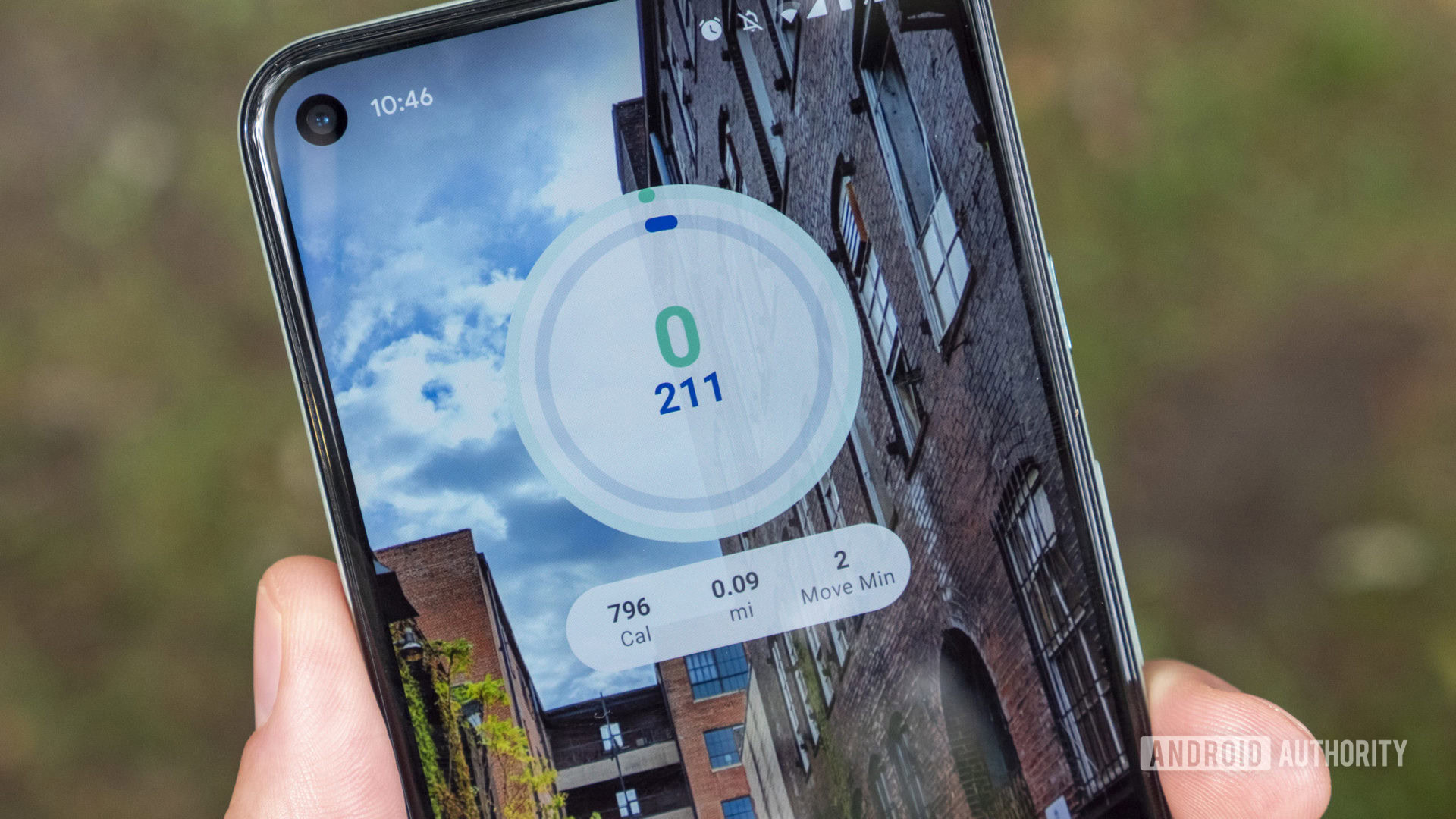
Google Fit is the fitness app for the rest of us. It’s not an app that doubles as a social network or one that offers weekly fitness challenges. Instead, it focuses on simplicity and doing a few core things really well. It also links with a number of powerful fitness trackers. There are benefits and downsides to Google’s approach, all of which we’ll explore in our comprehensive Google Fit guide.
What is Google Fit?
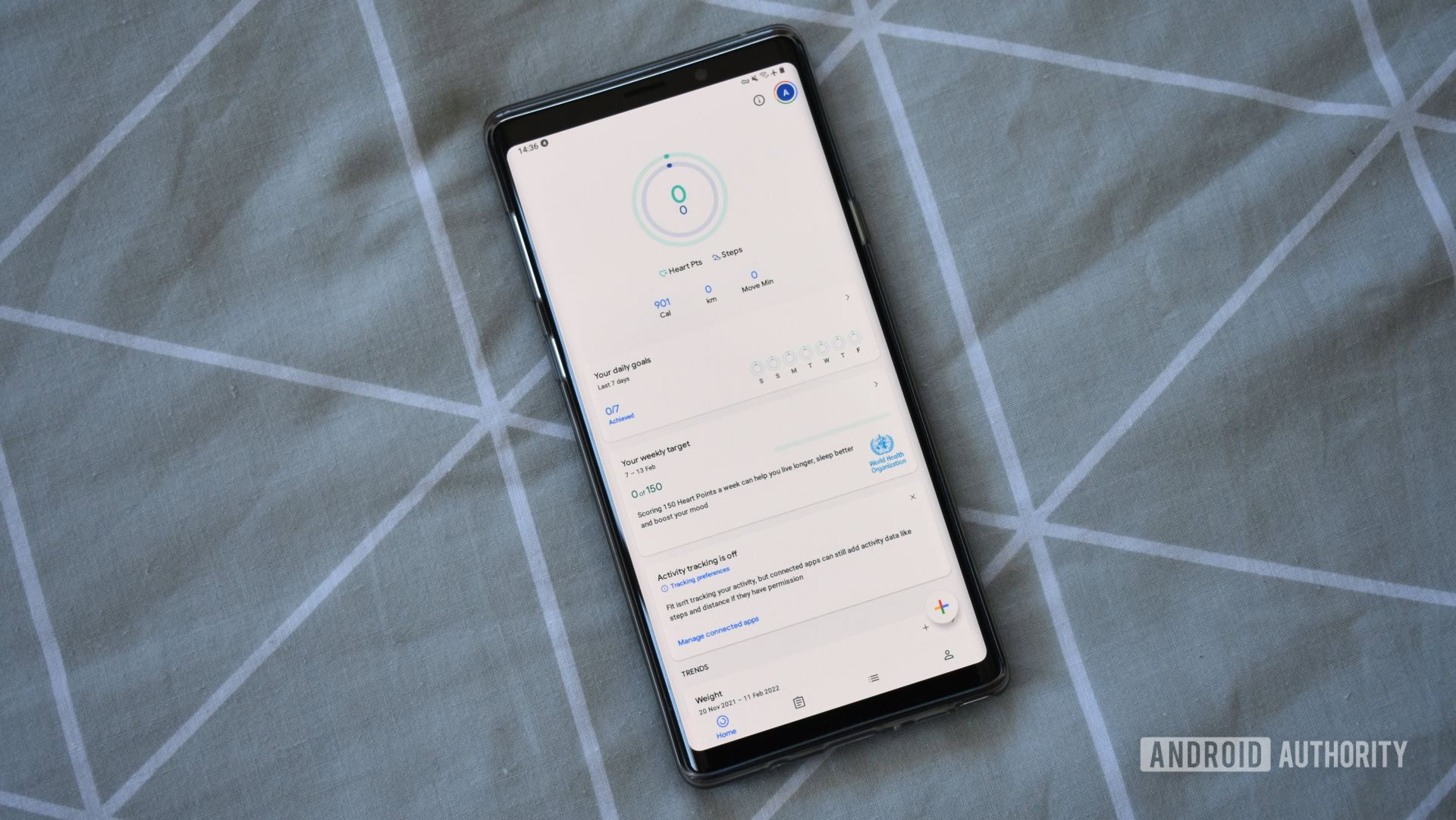
Depending on what type of user you are, you’ll either think Google Fit is great or way too simple for what you need. Fitness apps can be hit or miss. Some are overly packed with features and require a learning curve, while others have an intuitive design but not many features. Google Fit falls in the latter category. On its own, Google Fit is a basic fitness app. However, it also acts as a hub for any fitness or health data gathered from popular apps and fitness trackers.
Let’s say you use a Nest Hub (2nd gen) for sleep tracking, a Wear OS watch for general day-to-day activity, and a Polar watch for tracking your exercises. You can connect all of your devices to Google Fit and see your data in one place. If you’re more familiar with Apple’s ecosystem, think of Google Fit as Google’s version of Apple Health.
What does it track?
Like many fitness apps, Google Fit can track the basics. Users will find the following health and fitness metrics:
- Steps
- Calories burned
- Distance
- Elevation
- Move Minutes
- Heart Points (more on these below)
The app will display your sleep data if you have a compatible sleep tracker and can also show your weight and blood pressure, though these metrics need to be manually added. You can also record heart rate data with a compatible device or by placing your finger on your phone’s camera sensor.
Google Fit profile and navigating the app
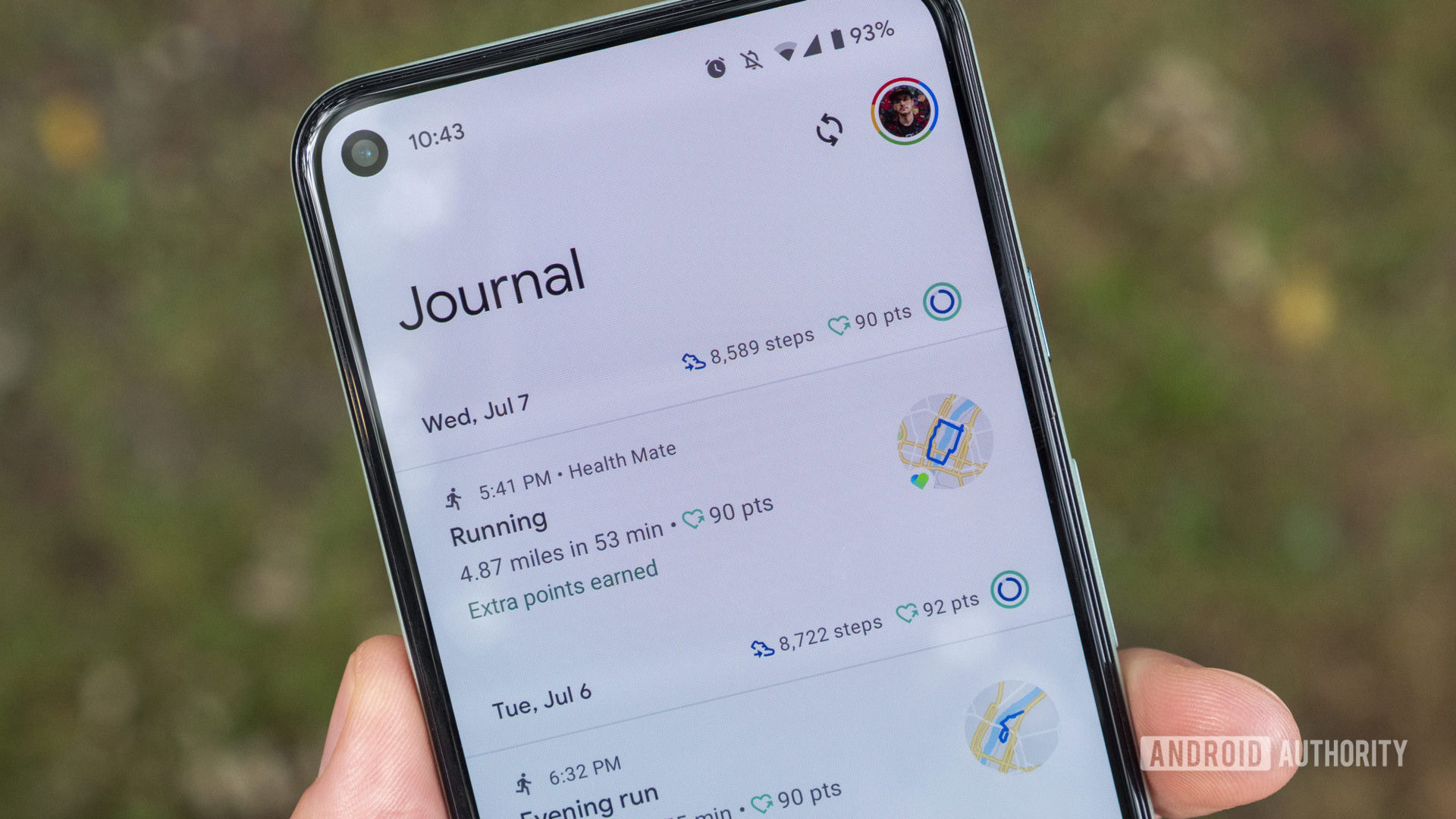
Users sign into Google Fit with an existing Google account. Once you tell the app a little about yourself (gender, date of birth, weight, and height), you’ll need to set up your activity goals. Google Fit uses your step count as your main daily goal, in addition to Heart Points, which are scored when you get your heart pumping with a higher-intensity activity.
Navigating the app
There are four main sections of the Google Fit app: Home, Journal, Browse, and Profile.
- Home: The Home screen shows an overview of your current day’s activities and health metrics. Here, you’ll see all the metrics listed above (steps, calories, etc.), as well as your recent workouts, instructional videos, and health recommendations from the World Health Organization (WHO) and the American Academy of Sleep Medicine (AASM).
- Journal: The Journal tab acts as a schedule or log. It’s a simple, scrollable list of all your recorded activities.
- Browse: The Browse page houses shortcuts to core metrics, from activity and body measurements to vitals and sleep. This page includes data from other third-party products, connected apps, and devices.
- Profile: The Profile page is where you’ll adjust your goals for Move Minutes and Heart Points, as well as your personal information.
Back on the Home tab users can tap a colorful ring widget. This will take you to a summary of your daily, weekly, and monthly views of your Heart Points and steps data. If you scroll through your history and want more details on your activity stats for a specific day, click on the day, and you’ll find all your recorded activities. From there, you can click on an individual activity to see more minute details like distance, steps, calories, and pace metrics.
Back on the Home tab again, there’s also a small floating action button at the bottom right that looks like a plus sign with Google’s color scheme. This button lets you manually track a workout or add an activity, weight measurement, or blood pressure reading.
Dark mode
Google Fit also has a dark mode. If you have an Android phone with an OLED display, dark mode will help save a bit of battery life. To turn on Google Fit dark mode, select the Profile tab, then the settings cog on the top of your screen, then scroll down to Theme. Set it to light, dark, or system default.
Move Minutes and Heart Points
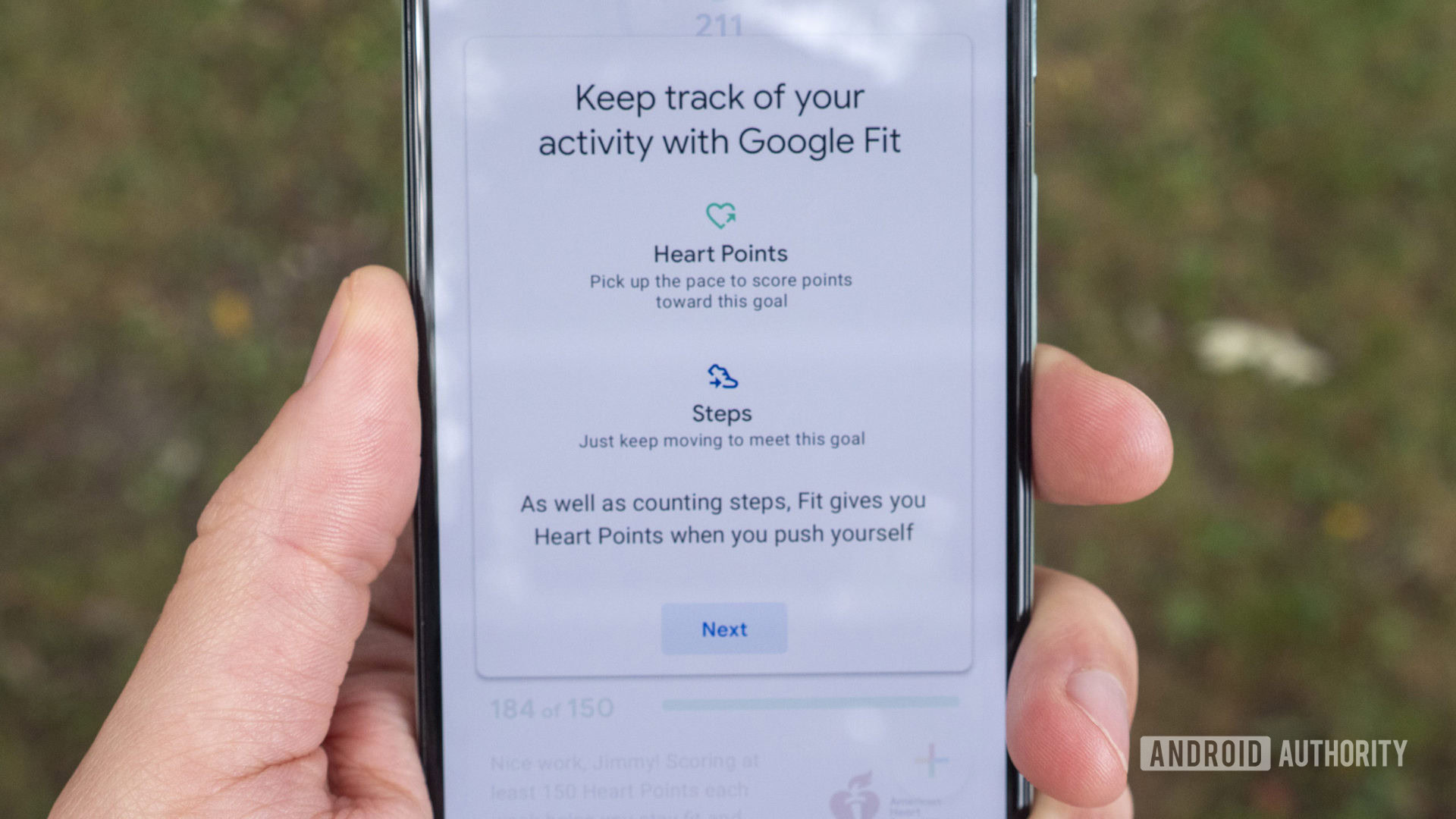
Google Fit approaches things differently than other fitness apps. You can still check on stats like heart rate and step count, but Google Fit also combines your activity metrics to make them mean something. For instance, you might see that your lunch walk took around 22 minutes to complete. However, you might not know what that means in relation to you your overall health. How do 22 minutes of activity affect your fitness? Most importantly, what goals do you need to meet to stay healthy?
Google worked with the American Heart Association (AHA) to create two goals based on the Heart Association’s activity recommendations. The results are Move Minutes and Heart Points.
- Move Minutes: Move Minutes is another way to say “active time.” You earn Move Minutes for every bit of physical activity you do, including walks, runs, swims, yoga, and much more.
- Heart Points: Heart Points relate to the activities you perform of higher intensity. One minute of moderately intense exercise, like a swift walk, earns one Heart Point. You earn double Heart Points if you complete even more intense activities, like a long run.
Google’s goal with Move Minutes and Heart Points is to make the results of exercising easier to understand. It’s a different approach that what other fitness apps offer, but that’s not a bad thing. It just means that if you’re already used to tracking your fitness with another app, you may not want to dive right into Google Fit. On the other hand, the focus on Move Minutes and Heart Points is a seriously valuable way to guide users on how to stay healthy.
Apps compatible with Google Fit
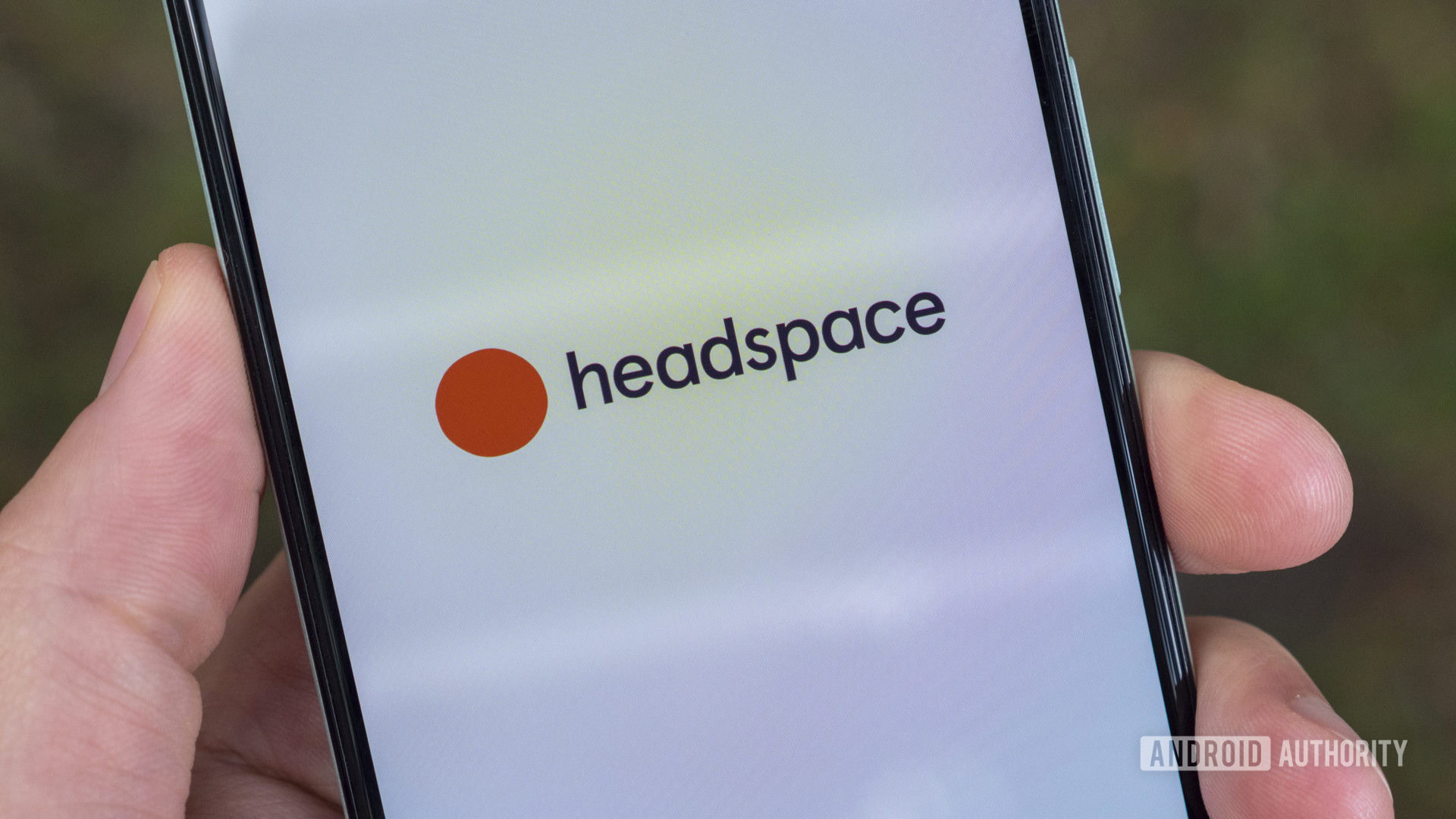
There are a few reasons you may want to connect Google Fit with other apps. Let’s say you use a Garmin device for tracking your workouts through an app like Strava, but you really love Google Fit’s Move Minutes and Heart Points metrics. If you connect your Google Fit account to Strava, your fitness data will automatically transfer to Google Fit.
You also might want to connect Google Fit to another app if you’re using a device from the Wear OS platform. As discussed, Google’s fitness app isn’t the most versatile option available. If you want to keep track of your activity on a more powerful platform like Runkeeper, connecting your Google Fit account to a third-party app will do the trick.
Compatible third-party apps
What apps are compatible with Google Fit? Check out some of the most popular Google Fit-compatible apps below:
- 8fit
- Adidas Running
- Adidas Training
- AlFit
- BetterMe
- BodySpace
- Buttocks Workout
- Calm
- Calorie Counter – Asken Diet
- Calorie Counter by FatSecret
- Clue Period & Cycle Tracker
- Daily Yoga
- Drink Water Reminder
- Dumbbell Workout at Home
- Elemnt
- Fasting
- Fastrack Reflex
- Feelfit
- FitToFit
- Fitwell
- Fossil Smartwatches
- Freeletics
- Glow
- Headspace
- Health Sync
- HealthifyMe
- Height Increase Workout
- Home Workout
- Home Workout for Women
- HUAWEI Health
- Impact – Steps Fitness Charity
- Instant Heart Rate Plus
- Instant – Quantified Self, Track Digital Wellbeing
- Leap Fitness Group apps
- LG Health
- Lifesum
- Lose Belly Fat Abs Workout
- Lose It!
- Lose Weight at Home
- Lose Weight for Men
- Lose Weight for Women
- Map My Fitness
- Map My Ride
- Map My Run
- Mindbody
- Monitor Your Weight
- MyFitnessPal
- Nike Training Club
- Noom
- Oura
- Plank Challenge
- Pokémon Go
- Pokewalk
- Polar Flow
- Progression Workout Tracker
- Qardio
- realme Link
- Renpho
- Runkeeper
- Seven – 7 Minute Workout
- Six Pack in 30 Days
- Sleep As Android
- Sleep Cycle
- Splits Training in 30 Days
- Step Counter
- Strava
- Stretch Exercise
- VeryFitPro
- Wahoo Fitness
- Walgreens
- Walk with Map My Walk
- Wear OS by Google Smartwatch
- Wearfit
- Weight Track Assistant
- Withings Health Mate
- Workout for Women: Fit at Home
- Workout Plan & Gym Log Tracker
- Workout Trainer: Home Fitness
- Zepp (formerly Amazfit)
- Zepp Life (MiFit)
Google Calendar integration
You can also schedule recurring exercises with Google Fit through Google Calendar. To do so, open Google Calendar, tap the + button on the bottom-right corner, then Goal, then Exercise. From there, you can choose which exercises you’d like to schedule (run, walk, yoga, hike, etc.), how often you’d like the exercise to recur, the duration of your exercise, and what time of day you’d like to exercise. This is a great way to integrate activity into your schedule.
Devices compatible with Google Fit
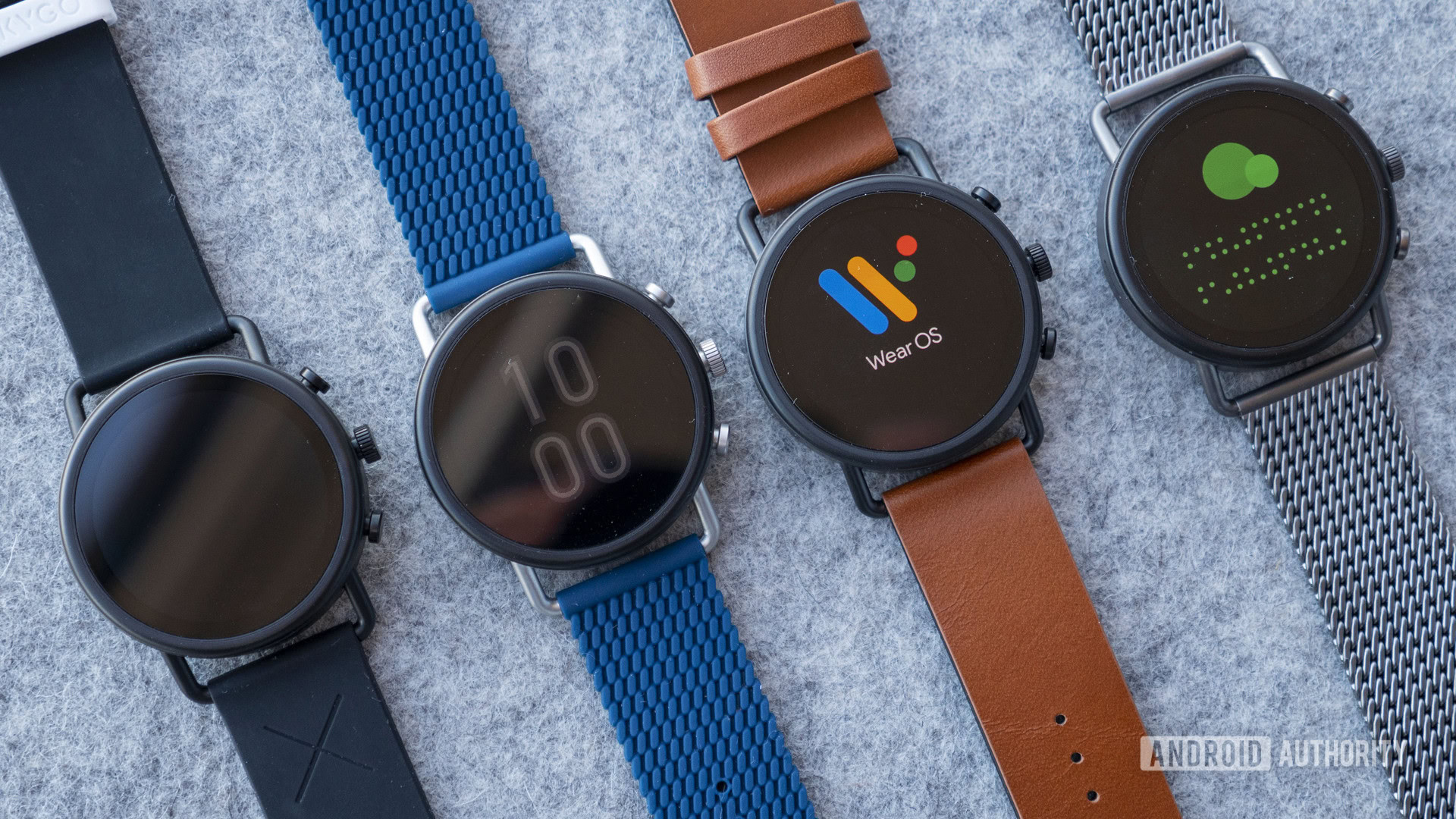
Many fitness and health devices are compatible with Google Fit, most of them being smartwatches. Google Fit is the default fitness app for Wear OS devices (unless a company includes its own fitness app), so you can access Google Fit if you pick up a Wear OS smartwatch.
Though all Wear OS smartwatches are compatible with Google Fit, the data the app records will depend on which watch you’re using. For instance, Google Fit won’t record heart rate data if you’re using a watch without a heart rate sensor. On the other hand, if your Wear OS watch doesn’t have a heart rate sensor, but you happen to own a standalone heart rate sensor (such as a chest strap or armband), you can connect that device to Google Fit to see your heart rate data.
Non-Wear OS devices
Other non-Wear OS devices work with Google Fit, too. Here are our favorite Google Fit-compatible devices from that selection:
- Xiaomi Mi Bands
- Withings Scanwatch Horizon, Withings Scanwatch, Move, and Move ECG
- Withings Body Cardio, Body, and Body Plus smart scales
- Eufy Smart Scale, Smart Scale C1, Smart Scale P1
- All Polar fitness watches
If you own a Fitbit device and would like your fitness data transferred over to Google Fit, there’s a third-party app for that. Depending on your device, you may eventually see some integration built in as Fitbit is now owned by Google.
Do you need the Google Fit app if you already own a Google Fit-compatible device?
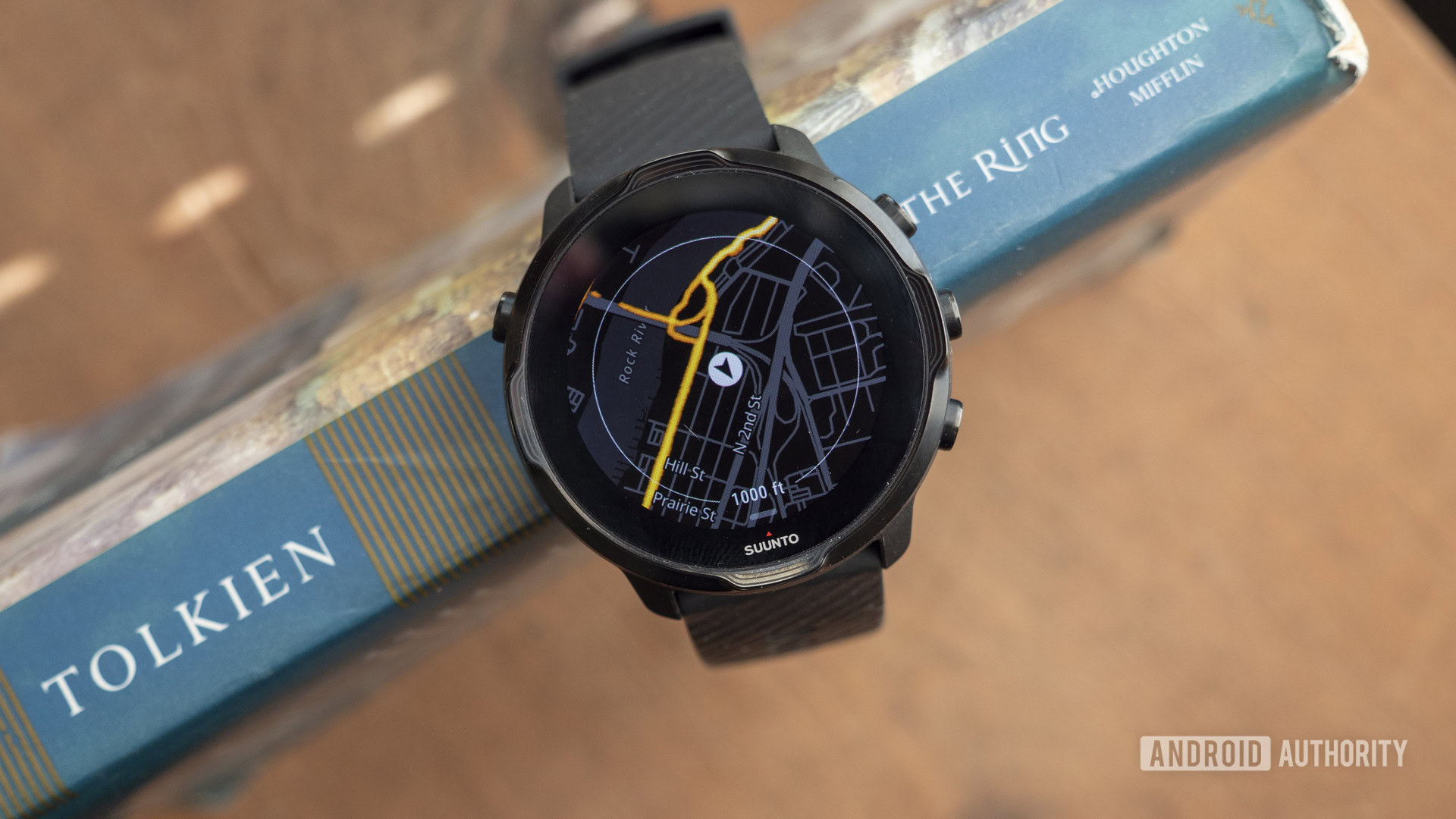
Nope, but you won’t get the best experience without it. Smartwatches and fitness trackers don’t have big screens, which makes it more difficult to view detailed activity information. Install the Google Fit app on your phone to ensure you’re getting the most data in the best way possible. Plus, if you want to connect your Google Fit account to another fitness app that’s not available on your watch, you’ll need to download the Google Fit app on your phone.
The future of Google Fit
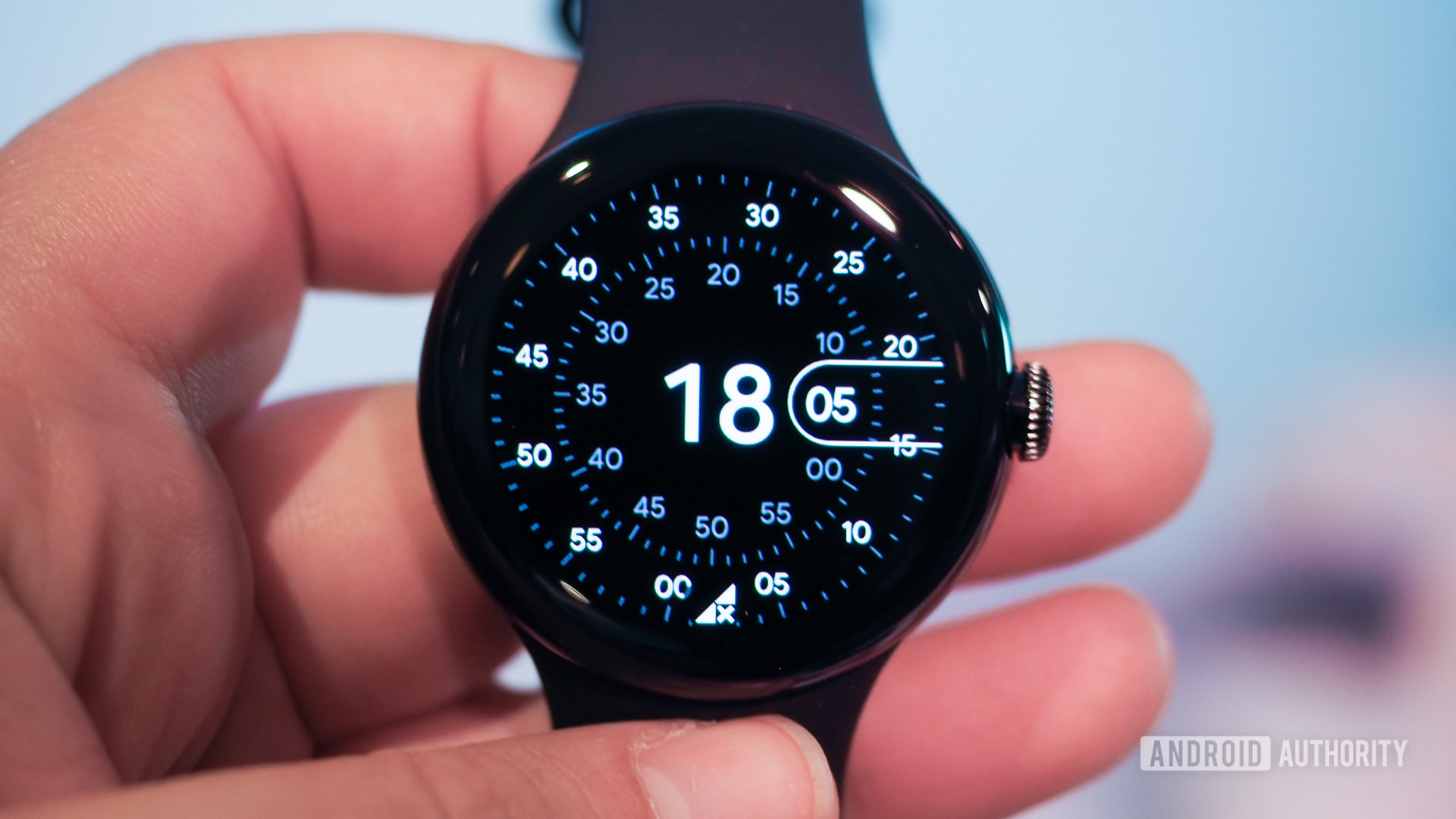
Google’s fitness and health products are a bit all over the place. It already has Google Fit — a fitness service that connects with all Wear OS watches — and the company doesn’t show any signs of abandoning it anytime soon. However, as mentioned, Google also now owns Fitbit, which also has a stellar fitness application. So, what’s Google to do with two fitness apps?
We’re already seeing some overlap between the two services and Google promises that more Wear OS devices will eventually offer more Fitbit staples. Meanwhile, Fitbit is deeply integrated into the Pixel Watch. In fact, the fitness and health experiences found on the device are centered around Fitbit’s top-tier services. The result is a powerful smartwatch stacked with Google’s tools and an invaluable fitness companion tied to Fitbit’s fantastic ecosystem. This is likely just the beginning of what we can expect to see from the company going forward.
What’s missing from Google Fit?
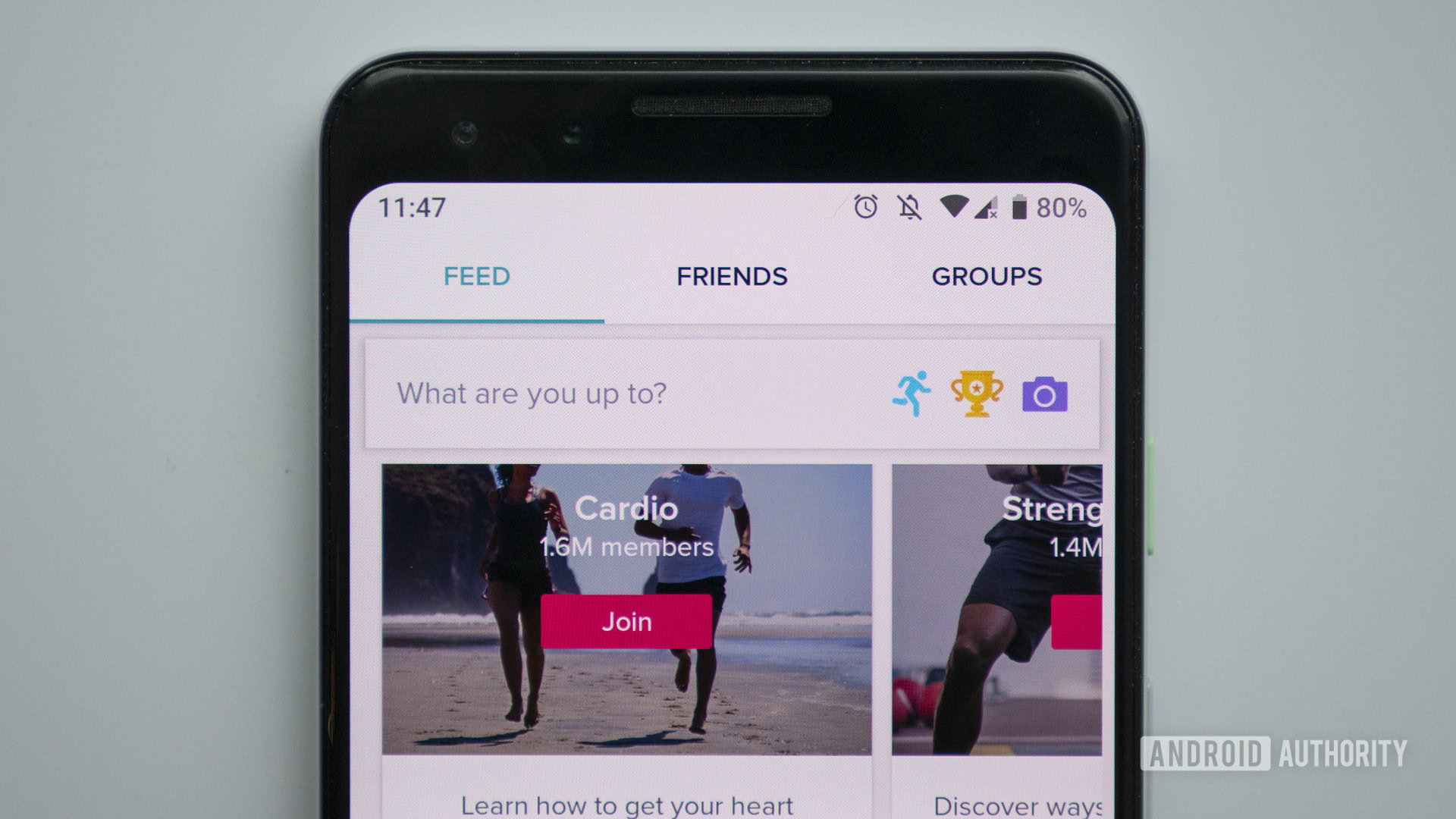
Google Fit’s strengths lie in its simplicity. Essentially, it’s the app version of a basic activity tracker; it keeps track of your simplest health metrics and not much more.
No social component
The main aspect missing from Google Fit is any kind of social platform. Other popular fitness apps, like Strava, emphasize community. Being able to reach out to a community of like-minded people to help you along your fitness journey can be extremely helpful for some users.
Some apps, for instance, lets you join health and fitness groups, post status updates and photos, comment on posts, and ask for advice if you need it. Others focus more on activity progression and staying up to date on how your friends are performing. None of that is available in Google Fit.
Detailed training programs and tracking
The app also lacks any training programs. This is certainly an advanced feature that not all fitness apps have, but it’s worth bringing up. The closest thing Google Fit offers is customized links to workout videos on YouTube.
The app also doesn’t display progress over time for certain activities. You can’t click on a running activity and see how you’ve progressed over the previous weeks or months. You can do this with weight, heart rate, Move Minutes, and Heart Points, but not with exercises. There’s also no food or water logging in the app, though you can keep track of your weight.
Some of these things would be excusable if there were a Google Fit website that gave users more options and features (some apps push the more advanced features to the web to keep the mobile apps cleaner). Unfortunately, Google shuttered the web interface in February 2019, so the app is all you get.
Overall, Google Fit is a solid start to what could one day be a powerful fitness application. For right now, it’s simple, clean, and compatible with a ton of other fitness and health apps. Additionally, Move Minutes and Heart Points are genuinely useful metrics that will undoubtedly help people get and stay healthy. Whether it’s the app for you will likely depend on what type of athlete you are and whether or not you’re already invested in another app.
FAQs
Google Fit only tracks your steps if given permission. It can also pull your step count from other connected devices like a Fitbit. If you track steps using your smartphone, Google Fit will use onboard sensors to measure your steps.
Every Wear OS device is compatible with Google Fit, as well as many third-party smartwatches and trackers.
If you manually start an exercise, the data should be reasonably accurate. The automatic workout detection is less accurate, as it may not start right when you begin your workout. Overall, the accuracy will depend on your device, too.
Yes. Downloading and using the Google Fit app is completely free.
Google Fit is compatible with many of the most popular workout apps. You can integrate Nike Run Club, Strava, MapMyFitness, and many more. Check out our full list of compatible apps above.